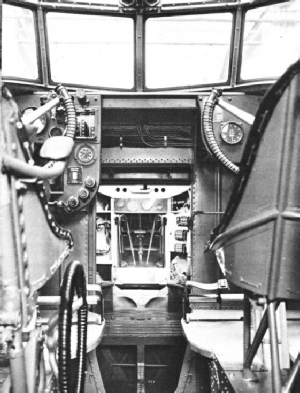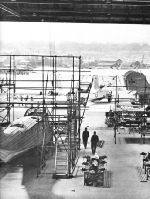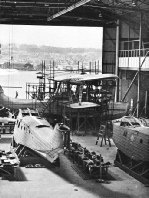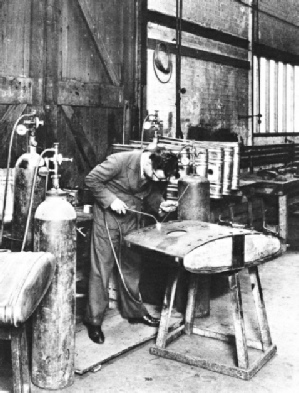

© Wonders of World Aviation 2015-
Part 28
Part 28 of Wonders of World Aviation was published on Tuesday 13th September 1938, price 7d.
This part included a central photogravure supplement further illustrating the article on Saro Aircraft.
The Cover
Our cover this week shows a Southampton class flying boat in the air over the Needles, Isle of Wight. The Supermarine Southampton Mark II is a twin-engined bombing and naval reconnaissance tractor biplane. The type originally had Napier Lion Series V engines; later, Rolls-Royce Kestrels were substituted.
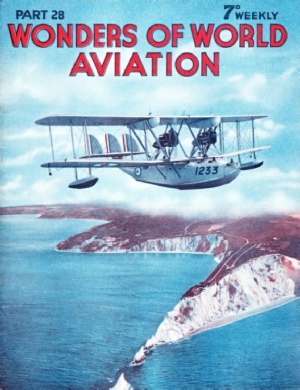
Contents of Part 28
RAF Operations Overseas
(Part 2)
Development of the Bomber
Saunders-Roe (Saro) Aircraft
Saro Aircraft
(photogravure supplement)
Saro Aircraft:
Photogravure Supplement
THE BOMB-AIMER’S POSITION can be seen forward between the two pilots’ seats in this photograph of a Saro London flying boat. To the right of the bomb-aimer’s position are the three rows of switches which release the bombs electrically. The bombs are carried underneath the lower wings between the hull and the wing floats.
Saro Aircraft:
Photogravure Supplement - 2
MAIN WORKSHOP of Saunders-Roe, Ltd , at Cowes. It is sufficiently large to take from ten to twelve flying boats in various stages of construction. The doorway has an opening 150 feet wide and 40 feet high. This doorway is closed by six steel-framed sliding doors, each weighing five tons but easily operated by one man by means of hand gearing.
